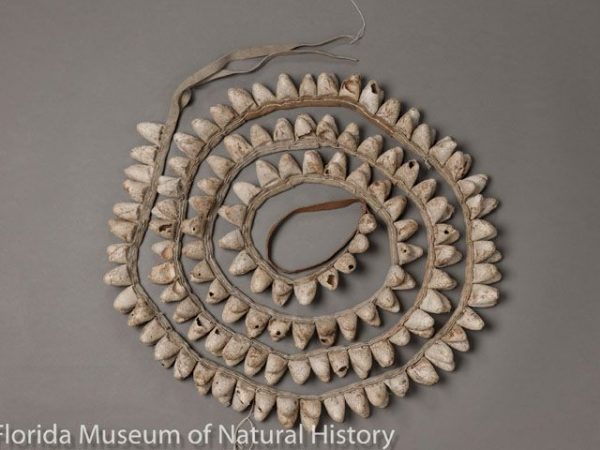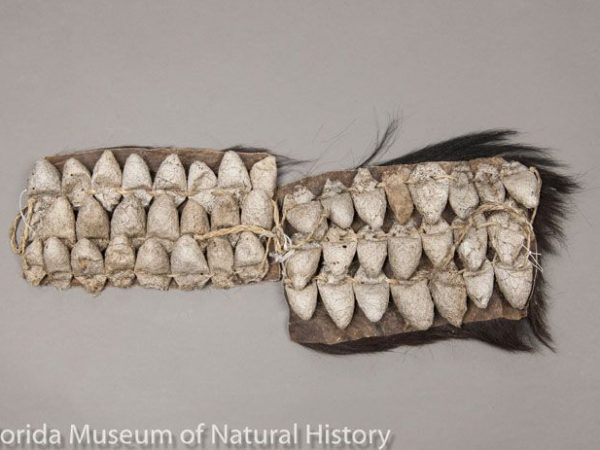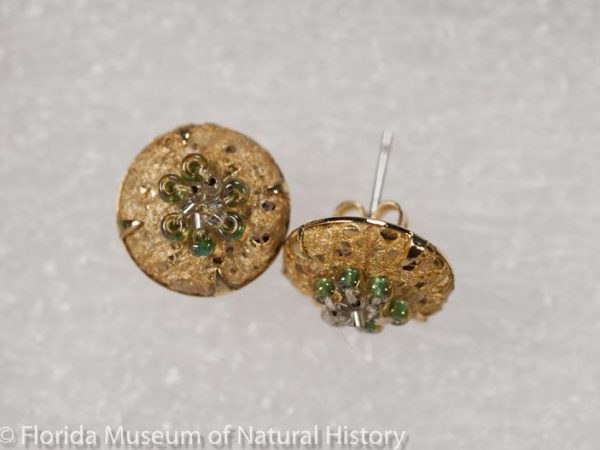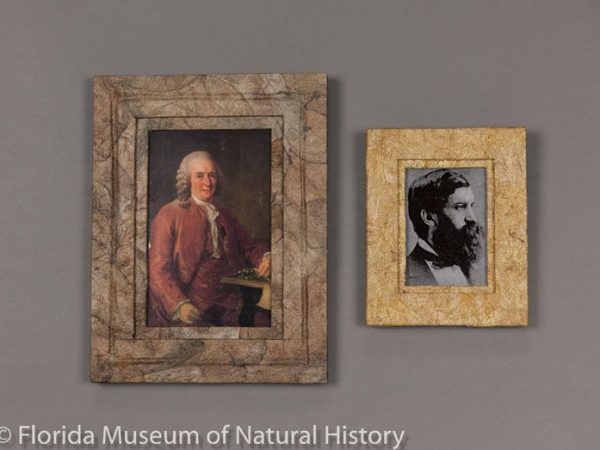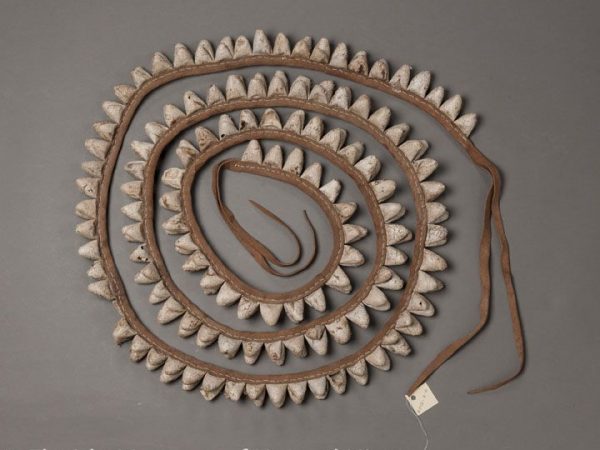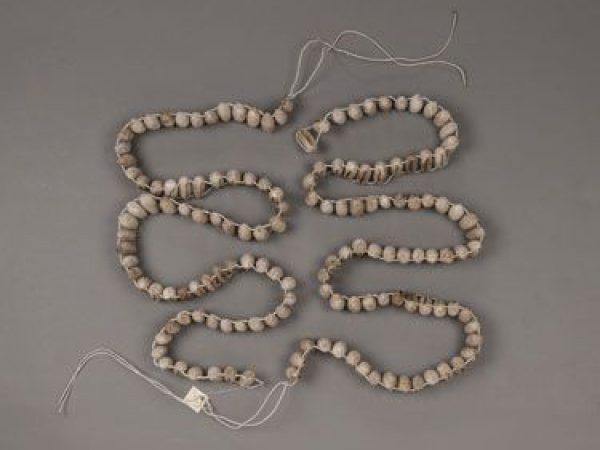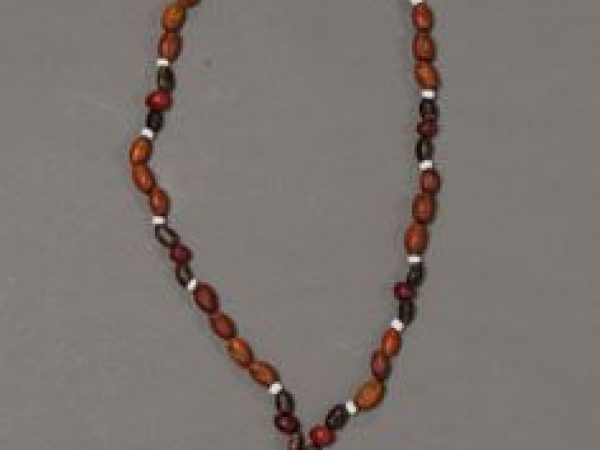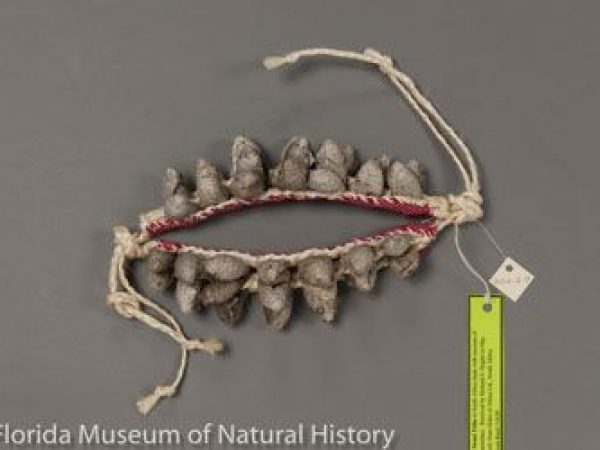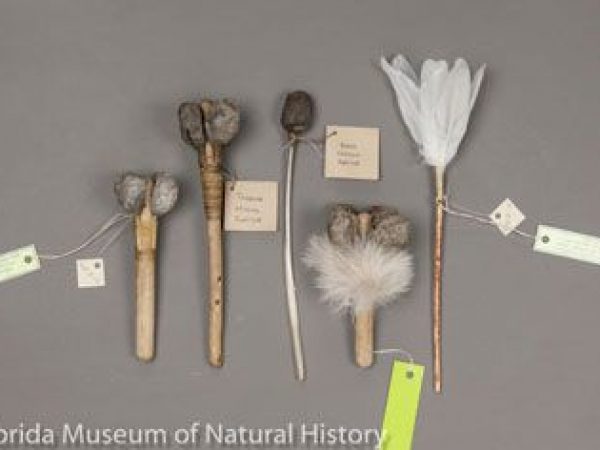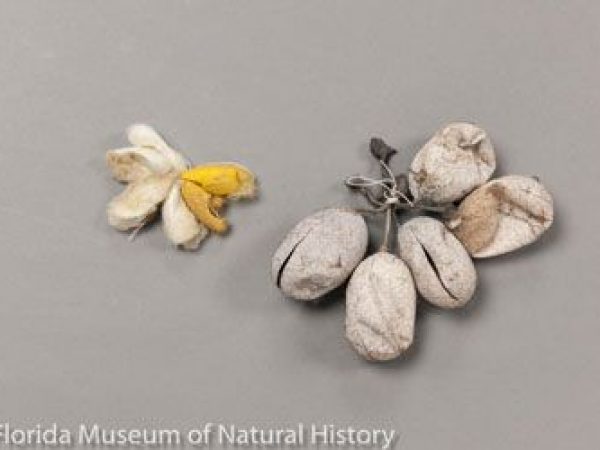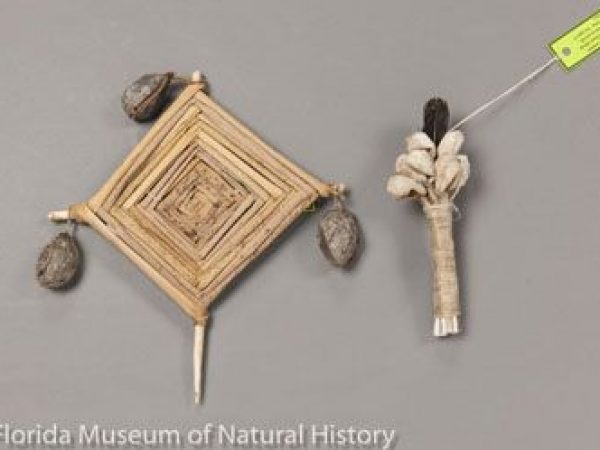Inside the collections of the McGuire Center for Lepidoptera and Biodiversity, there is a collection of cocoon artifacts, donated by Dr. Richard Peigler.
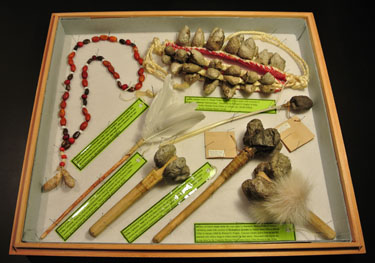 While most people associate the use of cocoons with the production of silk (sericulture), cocoons are used in many other ways. For thousands of years, humans have found functional and spiritual uses for cocoons.
While most people associate the use of cocoons with the production of silk (sericulture), cocoons are used in many other ways. For thousands of years, humans have found functional and spiritual uses for cocoons.
In this collection there are cocoon artifacts that represent various Native American Tribes of the United States and various tribes around the world, such as Africa and Mexico. The collection includes various hand and ankle rattles, as well as a charm and necklace crafted from different kinds of cocoons.
Moth cocoons are strong and sturdy when dried and preserved and are therefore used in creating a variety of products. Browse the collection below to see the variety of products created from different species of moths.
Resources
Peigler, R. S. 1994. Non-sericultural uses of moth cocoons in diverse cultures. Proceedings of the Denver Museum of Natural History, Series 3, Number 5: 1-20.
Peigler, R.S. 2004. Chapter 10: The silkmoths of Madagascar, pp. 154-163, in C.M. Kusimba, J.C. Odland, and B. Bronson, editors, Unwrapping the textile traditions of Madagascar. Field Museum, Chicago, and UCLA Fowler Museum of Cultural History, Los Angeles. 196 pp.
Peigler, R.S., & Maldonado, M. 2005. Uses of cocoons of Eupackarida calleta and Rothschildia cincta (Lepidoptera: Saturniidae) by Yaqui Indians in Arizona and Mexico. Nachrichten des Entomologischen Vereins Apollo 26(3): 111-119. PDF
